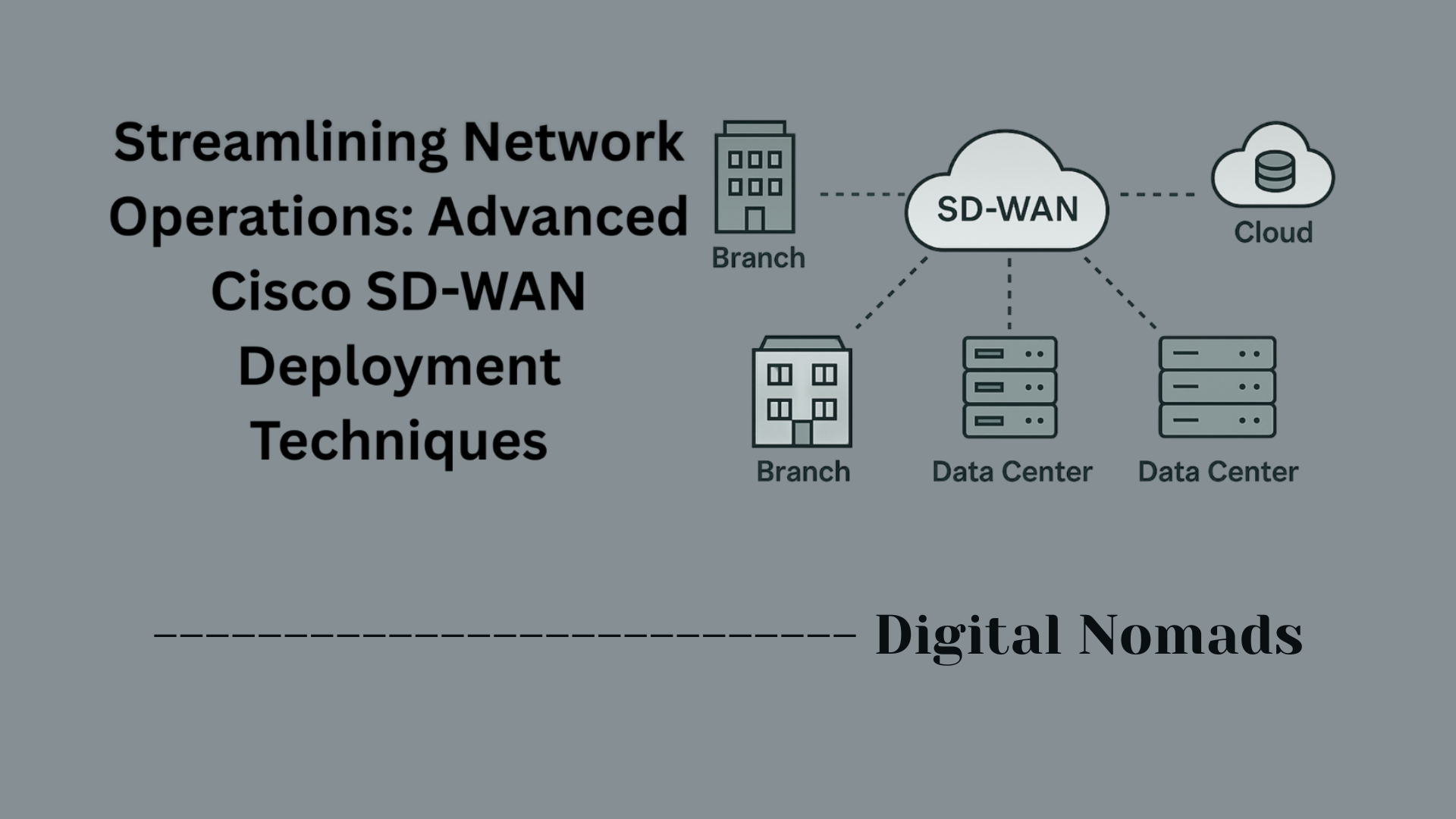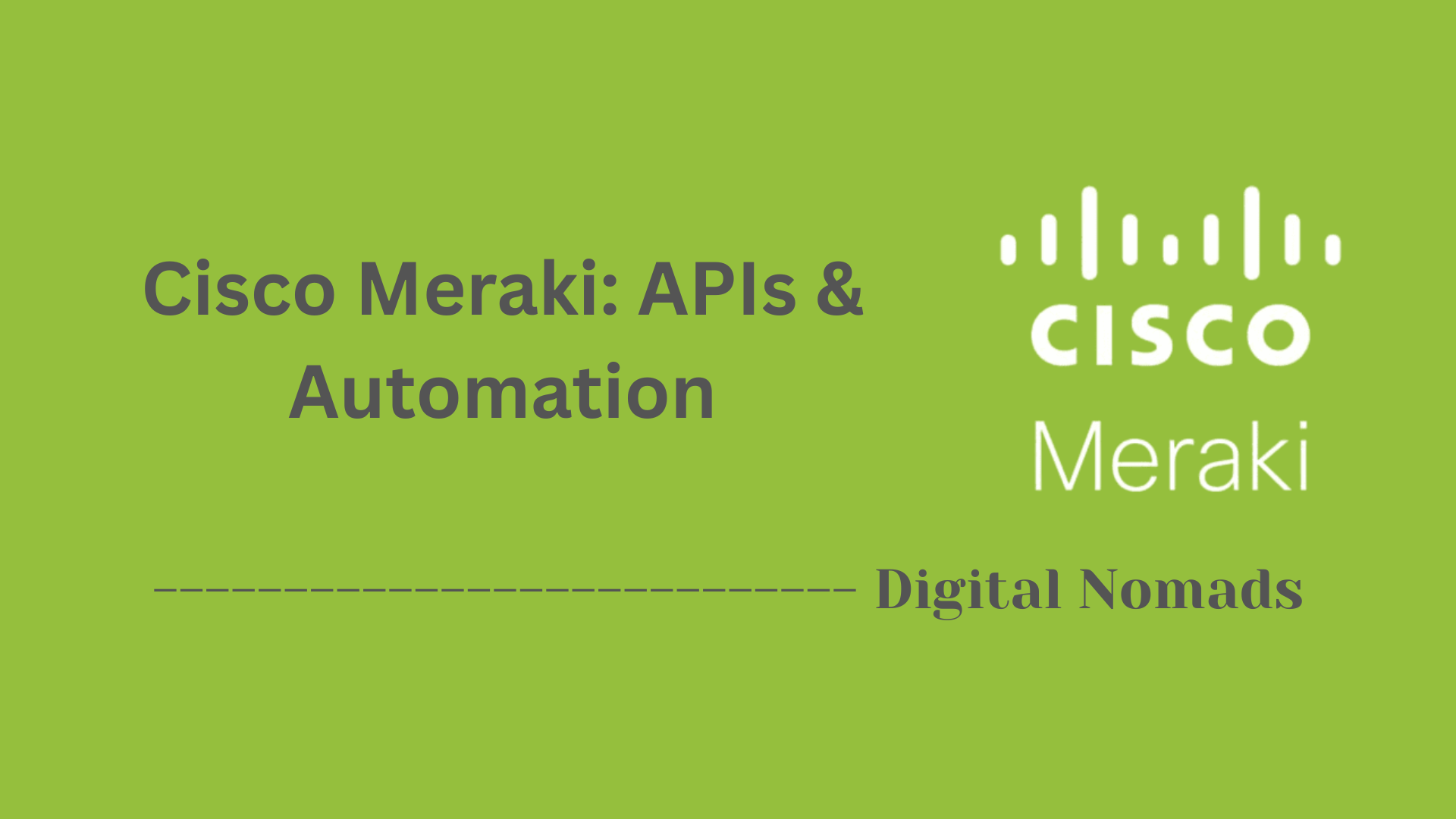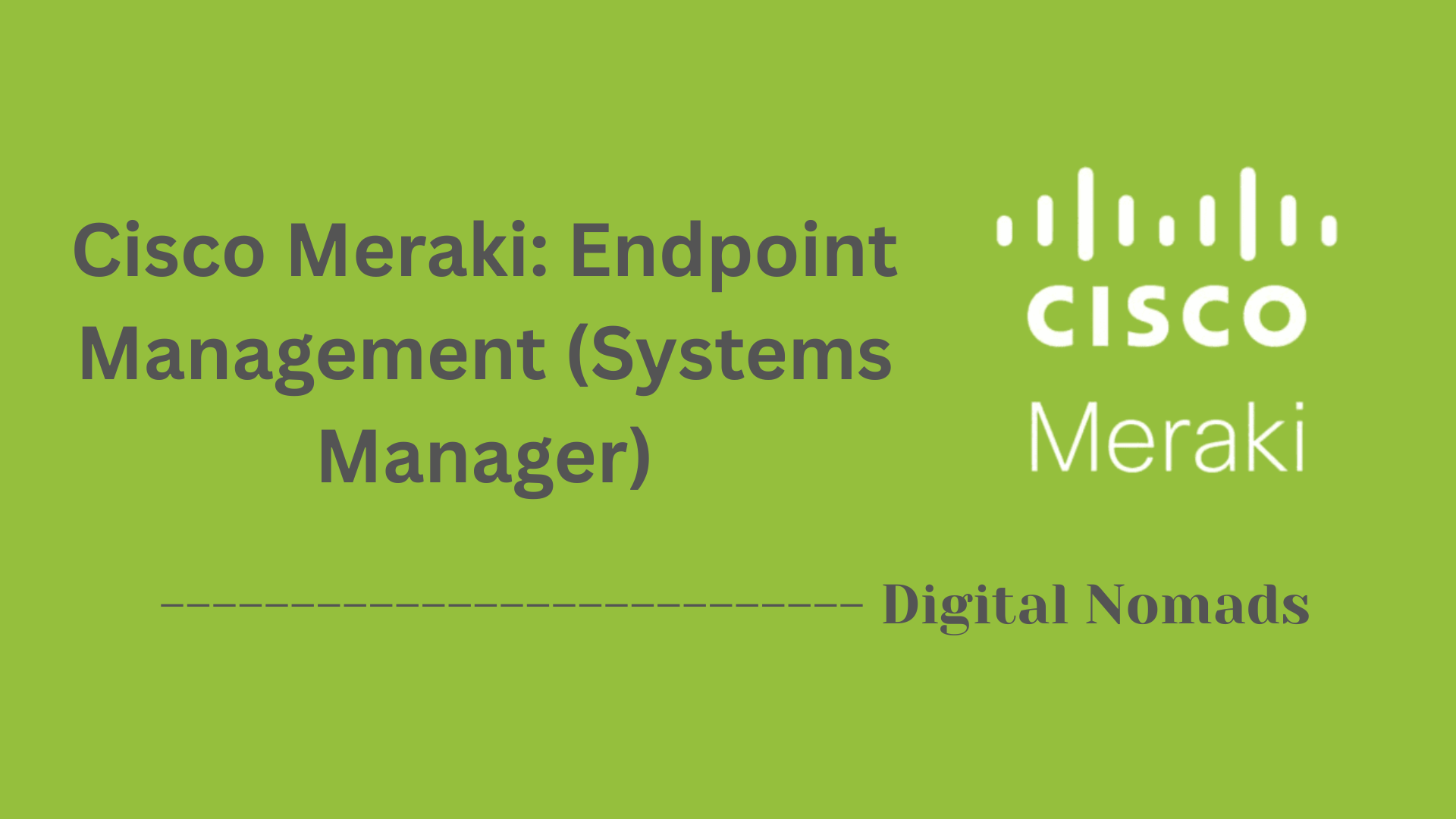Table of Contents
- Overview
- Camera Models
- Key Features
- Common Use Cases
- Deployment Best Practices
- Security Considerations
- Supported Integrations & Automation
- Maintenance and Troubleshooting
- Documentation Resources
- Conclusion
Overview of Cisco Meraki Smart Cameras
What Are Cisco Meraki Smart Cameras?
Cisco Meraki Smart Cameras are cloud-managed video surveillance devices engineered to deliver secure, scalable, and intelligent video monitoring for modern organizations. Unlike traditional security cameras that rely heavily on physical network video recorders (NVRs) or DVRs, Meraki cameras use local storage and cloud-based management to simplify deployment, configuration, and access to video data from anywhere.
Why Should You Know About Meraki Smart Cameras?
- Unified Management: All cameras are managed through the Meraki cloud dashboard, allowing you to monitor, configure, and troubleshoot from a single web interface—ideal for distributed sites, remote workforces, and scaling without complexity.
- Built-In Security: With end-to-end encryption, role-based access controls, and multi-factor authentication, video data is protected at rest and in transit. There's no need for complex firewall rules or risky port forwarding.
- Actionable Intelligence: Edge analytics like motion detection, occupancy tracking, people and vehicle analytics, and heatmapping are processed directly on each camera, providing immediate insight for physical security and business optimization.
- Reduced Infrastructure Burden: Cameras store video footage locally and only transmit relevant metadata and thumbnails to the cloud. This approach optimizes bandwidth and removes the need for onsite NVRs or separate video servers.
- Seamless Integration: They work natively with other Meraki products (switches, wireless, sensors) and provide APIs for custom automation and integration with third-party systems.
How Do Meraki Smart Cameras Work?
- Cloud Managed: Each camera connects securely to the Meraki cloud, automatically provisioning itself and remaining up to date through cloud-delivered firmware upgrades and security patches.
- Local Recording: All video footage is recorded directly to onboard solid-state storage, ensuring resilience even during network outages. Video can be retained for weeks or months based on model and resolution settings.
- Easy Access: Users access live video streams, historical footage, and camera settings via the Meraki dashboard from anywhere, using secure authentication. This eliminates the need for VPNs or on-premises software clients.
- Edge Processing: Powerful onboard processors allow cameras to analyze video in real-time for motion, object detection, person counting, and more—delivering smart alerts and business data without sending video to the cloud for analytics.
- API-Driven Automation: Open APIs expose camera data and events to external platforms, enabling business automation (like generating reports, triggering alarms, or integrating with access controls) with minimal coding.
Summary
Cisco Meraki Smart Cameras bring together security, intelligence, and operational simplicity in one solution. Organizations benefit from a future-proof, scalable system that protects assets, drives business insights, and reduces administrative overhead—all without the legacy limitations of traditional surveillance systems.
Camera Models
The Cisco Meraki MV family includes a range of smart cameras designed for a variety of indoor and outdoor environments. Each model offers cloud-managed configuration, built-in analytics, and secure local storage. Here's a breakdown of the core models currently available:
-
MV12 Series (MV12N, MV12W):
Compact indoor models with 1080p resolution, fixed lenses, and onboard storage. Ideal for retail, reception areas, and hallways. -
MV22 and MV22X:
Indoor and outdoor varifocal cameras with 1080p and enhanced zoom capabilities. MV22X includes improved low-light performance and larger storage capacity. -
MV32:
360° fisheye lens camera with a high-resolution 1920x1920 sensor. Offers full room coverage with de-warping capabilities. Suited for monitoring open areas like lobbies and cafeterias. -
MV52:
High-performance outdoor camera with 4K resolution, varifocal lens, IR night vision, and advanced analytics. Designed for perimeter security and large open-air environments. -
MV63 and MV63X:
Compact outdoor models with 4MP or 8MP resolution and wide field-of-view lenses. Ideal for flexible deployment with edge-based object detection and motion analytics.
All models store video footage locally on the device and intelligently upload thumbnails and metadata to the cloud for seamless access through the Meraki dashboard.
Key Features
Cisco Meraki Smart Cameras are packed with advanced features that simplify management, ensure robust security, and empower organizations with actionable analytics. Here are the core features that set them apart:
-
Cloud-Based Management:
All cameras are centrally configured and monitored through the Meraki dashboard. This allows for easy deployment and fleet-wide policy updates, wherever devices are located. -
Onboard Storage & Cloud Archiving:
Each camera stores footage locally on high-endurance solid-state storage, ensuring continuous recording even if network connectivity is lost. Optional cloud archiving enables scalable, off-site backup. -
Intelligent Video Analytics:
Built-in machine learning and artificial intelligence enable motion detection, object counting, occupancy analytics, people/vehicle detection, and motion heatmaps—all processed at the edge for privacy and efficiency. -
Motion-Based Recording & Retention:
Cameras optimize storage by only saving footage when motion is detected, maximizing retention without manual intervention. -
High Video Quality:
Delivers crisp 1080p to 4K video resolution for detailed surveillance, low-light performance, and wide-angle coverage. -
Seamless Integration:
Works natively with Meraki wireless, switching, sensors, and APIs to provide a full-featured, unified security and network experience. -
Granular Access Controls:
Flexible, role-based permissions let administrators tightly control who can view, export, or manage recordings, enhancing privacy and compliance. -
Always Secure and Up to Date:
Cameras use end-to-end encryption, secure boot, and automated firmware updates to guard against threats with minimal admin overhead. -
Easy Installation & Maintenance:
Cameras can be deployed with Power over Ethernet and feature wireless options for flexible installs. The dashboard provides health reporting, remote troubleshooting, and scheduled maintenance. -
Custom Automation and Integrations:
Open APIs and webhooks allow for automated incident response, system integration, and business insights tailored to your environment.
These features make Cisco Meraki Smart Cameras a compelling choice for organizations seeking to upgrade their physical security and gain operational intelligence, all with cloud simplicity.
Common Use Cases
Cisco Meraki Smart Cameras are versatile solutions used across industries to enhance security, streamline business operations, and gather analytical insights. Here are some of the most impactful and practical deployment scenarios:
-
Physical Security Monitoring:
Deploy cameras at entry points, parking lots, and hallways to deter intrusions and enable real-time threat detection. Footage can be reviewed securely from any location using the Meraki dashboard. -
Retail Store Analytics:
Track foot traffic, customer dwell time, and queue density to improve store layout, optimize staffing, and enhance customer experience. -
Campus and Education Safety:
Provide 24/7 surveillance of school facilities, monitor arrival/dismissal zones, and respond quickly to incidents with cloud-based footage access by security teams. -
Workplace Occupancy and Optimization:
Use heatmaps and people counting to analyze how office spaces, meeting rooms, or shared environments are utilized. This data supports space planning and energy efficiency efforts. -
Logistics, Warehousing, and Manufacturing:
Improve operational visibility across loading docks, production lines, and inventory zones. Integrate alerts for safety compliance and incident tracking. -
Compliance and Liability Protection:
Record and archive footage to meet requirements in regulated industries such as healthcare, finance, and food services—protecting businesses in the event of disputes. -
Remote Site and Fleet Surveillance:
Monitor unmanned or distributed locations with minimal on-site infrastructure. Smart cameras provide bandwidth-efficient surveillance and alerts without a local NVR.
Meraki cameras offer far more than traditional security — they bring intelligence, automation, and visibility to businesses of all sizes and industries.
Deployment Best Practices
Proper planning and thoughtful deployment are essential for maximizing the coverage, reliability, and security of Cisco Meraki Smart Cameras. Below are essential best practices to ensure a successful installation and ongoing operation:
-
Conduct a Site Survey:
Evaluate the environment and mark areas with high traffic or security risks. Use floor plans and take photos, noting lighting conditions, installation heights, and distances to targets for optimal positioning. -
Cover Critical Points with Redundancy:
Position cameras to cover all entry and exit points, aiming for at least two cameras per access point to provide redundancy and minimize blind spots. -
Optimize Camera Placement:
Mount cameras at proper heights and angles to maximize field of view and detail. Adjust for lighting and minimize glare or shadows. Use vandal-resistant models in risk-prone areas. -
Leverage Power over Ethernet (PoE):
Use PoE-enabled network switches or injectors for simplified installation and centralized management. Ensure the network has sufficient PoE capacity for all cameras. -
Plan Network Segmentation:
Place cameras on a dedicated VLAN for better traffic management and security. Apply Quality of Service (QoS) to prioritize video streams as needed. -
Create Logical Naming and Tagging:
Assign intuitive names and tags to each camera for easy identification, management, and policy assignment in the Meraki dashboard. -
Document the Deployment:
Maintain up-to-date network diagrams, camera locations, connectivity details, and documentation to streamline future troubleshooting or expansion. -
Test and Validate:
Test camera views and video quality after installation by simulating expected lighting and activities. Adjust placement if necessary before finalizing mounts. -
Ensure Security and Compliance:
Enable encryption, follow access control best practices, and observe local laws regarding video surveillance and audio recording. -
Schedule Regular Maintenance:
Check camera firmware updates, verify storage health, and periodically review camera performance and coverage to address evolving security needs.
By following these best practices, you can ensure that your smart camera deployment is effective, scalable, secure, and easy to manage over time.
Security Considerations
Ensuring the security of your video surveillance system is paramount. Cisco Meraki Smart Cameras are designed with robust safeguards at every layer to protect video data, device integrity, and privacy. The following best practices and built-in features help keep your camera deployment secure:
-
End-to-End Video Encryption:
All video data is encrypted both at rest and in transit. Cameras use advanced file-level and network-level encryption to prevent unauthorized viewing or interception. -
Hardware Security Modules:
Cameras are equipped with secure hardware elements such as Trust Anchor modules for signed firmware verification and tamper resistance. -
No Default Credentials:
Devices ship without default usernames or passwords, reducing vulnerabilities. Authentication relies on organization-controlled logins, SSO, and SAML integration. -
Role-Based Access Control:
Access to live and recorded footage, as well as administrative functions, is controlled by granular roles and user permissions. Only authorized personnel can make configuration changes or export video. -
Multi-Factor Authentication:
Enable and enforce two-factor authentication (2FA) for dashboard access to safeguard against credential-based attacks. -
Comprehensive Audit Logging:
All access to video and configuration changes are logged in detail, providing a reliable audit trail for security and compliance monitoring. -
Regular Automated Updates:
Firmware and security patches are delivered automatically through the cloud, ensuring vulnerabilities are resolved quickly across the fleet. -
Secure APIs and Integration:
APIs are authenticated and use secure protocols, preventing unauthorized third-party access to live video, analytics, or administrative controls. -
Infrastructure Hardening:
Cameras and cloud platforms operate within certified, physically secure data centers with restricted access, active monitoring, and redundancy. -
Compliance Support:
The platform aligns with global privacy standards such as ISO 27001, SOC 2 Type 2, and PCI DSS, helping organizations meet regulatory and audit requirements. -
Incident Alerts and Anomaly Detection:
The system provides automated alerts for suspicious access patterns, potential tampering, or configuration changes—enabling rapid incident response.
By leveraging these features and following best practices, organizations can confidently safeguard sensitive video data, uphold privacy, and maintain strong compliance with legal and industry standards.
Supported Integrations & Automation
Cisco Meraki Smart Cameras are engineered for seamless integrations and automation, empowering organizations to build intelligent, connected environments that go well beyond traditional surveillance. Discover how these cameras fit into broader physical security and business ecosystems:
-
Unified Meraki Ecosystem Integration:
Meraki cameras integrate tightly with Meraki sensors, wireless access points, and network switches. This allows IT and security teams to monitor, manage, and automate across all devices using a single dashboard. -
RESTful Camera APIs:
Leverage MV Camera APIs to automate workflows such as generating snapshots, extracting analytics (e.g., people counts, line crossing), and managing camera settings or roles. Data can be programmatically pulled for custom dashboards, reporting, and alerting. -
Webhooks for Real-Time Alerts:
Set up webhooks to trigger real-time notifications for specified events, like motion detection, tampering, or role changes. These alerts can integrate with incident and ticketing platforms, messaging apps, or SIEM tools. -
Third-Party Access Control Integration:
Connect Meraki cameras with leading access control platforms to correlate video feeds with door entry events, adding a visual layer of verification and audit trails for sensitive doors or areas. -
MQTT for IoT Workflows:
Support for MQTT streams enables real-time sharing of camera analytics and sensor events with building management systems, automation engines, or other IoT platforms. -
RTSP Stream Output:
Share raw video streams with compatible third-party video management systems (VMS) or analytics platforms using RTSP, expanding deployment flexibility for organizations with hybrid needs. -
Custom Automation Examples:
- Automatically generate daily occupancy reports using people count analytics API.
- Send a snapshot to security teams when motion is detected in restricted areas after hours.
- Trigger door lockdowns or lighting changes in response to camera-verified incidents via IoT integrations.
Open APIs, webhook alerts, and cross-product integrations make Meraki Smart Cameras adaptable for both IT-managed deployments and business-driven automation, enabling real-time insights, enhanced safety, and efficiency at scale.
Maintenance and Troubleshooting
Keeping your Cisco Meraki Smart Cameras well-maintained and quickly resolving issues ensures optimal performance and reliability. Below are proactive steps and troubleshooting tips for effective lifecycle management:
-
Monitor Camera Health via Dashboard:
Use the Meraki dashboard to view real-time camera status, connectivity, and storage health. Set up alerts for offline devices, recording issues, or atypical activity. -
Perform Regular Firmware Updates:
Schedule and apply firmware updates through the dashboard to benefit from new features, security enhancements, and bug fixes. Enable auto-update for convenience and compliance. -
Review Video Retention Policies:
Regularly check and adjust retention policies to balance storage usage and regulatory requirements. Verify that footage important for compliance or investigations is not overwritten prematurely. -
Test Camera Views and Recording Quality:
Periodically review live and recorded video streams to ensure image clarity, correct coverage, and audio/video sync. Adjust placement or focus if there are blind spots or quality issues. -
Check Physical Installation:
Inspect camera mounts, cabling, and environmental enclosures for wear, tampering, or misalignment. Ensure lenses and domes are clean and free from obstructions. -
Utilize Built-In Diagnostics:
Leverage diagnostic tools in the dashboard for connectivity testing, bandwidth monitoring, and troubleshooting local network issues affecting camera performance. -
Handle Common Issues:
- Camera Offline: Verify network and power connections, reboot the camera via the dashboard, and consult event logs for errors.
- Recording or Playback Gaps: Review storage health, network stability, and motion recording settings. Check for firmware updates that address known bugs.
- Poor Video Quality: Clean the lens, verify lighting conditions, adjust focus or field of view, and confirm bandwidth availability.
-
Document Changes and Resolutions:
Keep records of changes, incident resolutions, and maintenance schedules to facilitate future support and audits. -
Engage Meraki Support:
If issues persist, use the built-in support tools to contact Meraki technical support, share diagnostic data, and receive expert assistance.
Proactive maintenance and swift troubleshooting maximize camera uptime, ensure compliance, and contribute to a secure and effective surveillance deployment.
Documentation Resources
Access to comprehensive documentation and support materials is key to maximizing the value of Cisco Meraki Smart Cameras. Below you'll find essential resources for deployment, management, troubleshooting, and expanding your camera solution:
-
Product Datasheets & Specifications:
Review detailed datasheets for technical specifications, model comparisons, hardware features, and environmental requirements. -
Installation & Setup Guides:
Step-by-step instructions for mounting cameras, network integration, dashboard setup, and best practices for physical placement and connections. -
Meraki Dashboard User Manual:
In-depth reference for monitoring, managing, configuring, and securing cameras within the unified Meraki dashboard. -
API Documentation & Developer Hub:
Guides, code samples, and references for leveraging the Meraki MV camera platform APIs, enabling custom automation and integrations for third-party systems and dashboards. -
Technical Support Portal:
Access knowledge base articles, troubleshooting tools, and support ticket submission for rapid problem resolution and expert assistance. -
Security & Privacy Guides:
Resources focused on best practices for data protection, compliance, video retention policies, and platform security standards. -
Webinars, Training, and Community Forums:
Participate in live or on-demand training, virtual workshops, and forums to connect with peers and Meraki experts for knowledge sharing and tips.
These resources empower users to confidently deploy, integrate, maintain, and secure Cisco Meraki Smart Cameras while staying informed about new features and industry best practices.
Conclusion
Throughout this blog post, we've explored the full range of capabilities and value that Cisco Meraki Smart Cameras bring to modern network and physical security environments. These cloud-managed cameras are more than surveillance tools—they're intelligent, secure, and automation-ready solutions tailored for today's hybrid and dynamic infrastructures.
Key Takeaways:
- Model Variety: There's a Meraki smart camera for every use case—whether you need compact indoor models or rugged outdoor 4K solutions.
- Powerful Features: From onboard storage and motion-based recording to real-time analytics and seamless Meraki dashboard integration, these cameras simplify management and reduce operational overhead.
- Deployment Best Practices: Getting the most out of sensors means careful planning, strategic placement, proper configuration, and consistent documentation.
- Security-First Design: Built-in encryption, role-based access controls, secure firmware updates, and audit trails ensure end-to-end protection.
- Integrations & Automation: Open APIs, webhooks, and native integrations make it easy to build custom workflows and connect cameras with IoT, access control, and SIEM platforms.
- Ease of Maintenance: With powerful dashboard diagnostics, firmware automation, and proactive alerting, maintaining uptime and performance is intuitive and efficient.
Whether you're securing a retail store, managing a corporate campus, or looking to automate occupancy insights in real-time, Cisco Meraki Smart Cameras provide a flexible foundation for scalable growth and intelligent security.
Thanks for reading! If you enjoyed this post or found it useful, feel free to share it with your network or drop a comment. Stay tuned for more practical guides on building smarter, more secure infrastructures using cloud-managed technology.
Until next time—stay secure and stay curious! 👋




